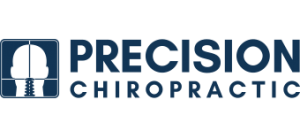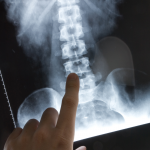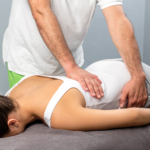My Story of Crushing Shoulder Pain
I am no stranger to soul crushing injuries. If you read the article on Rebuilding the Low Back, you already know that.
My shoulder injury occurred about 14 years ago (about 8 years before my back injury), and it was something I struggled with for years.
It was my senior year of college and I was obsessed with weight lifting and all things sports. I felt invincible. I didn’t think there was any way I could hurt myself. I looked great and I felt great….. until I didn’t.
It started with a sore right shoulder. The soreness turned into mild burning, and the mild burning turned into a constant burning and searing pain. So I did what any young intelligent person would do. I kept pushing harder. It finally got to a point where I could barely use my arm.
The Dreaded Diagnosis of My Shoulder Pain
I ended up getting an MRI and was diagnosed with subacromial bursitis, tendinosis of my supraspinatus tendon, and bicipital tendinopathy.
Sounds lovely, right? Basically, what that means is that my shoulder was inflamed and the tissues had degraded from chronic overuse and misuse injuries.
It literally took years to rebuild my shoulder. It shouldn’t have taken that long, but I met with many doctors and therapists who just gave me general exercises and advice. What I really needed was something much more detailed, customized, and specific. I needed more than a couple of generic stretches which is all I could find at the time.
How I Solved My Shoulder Pain
Then I found a couple of really skilled practitioners who were able to help me start to rebuild my shoulder. It was a great start, but it still wasn’t enough. I eventually had to go on my own journey of self-study and self-experimentation until I finally found what worked.
It was a combination of very skilled structural chiropractic care to correct my alignment and biomechanics as well as some detailed soft tissue and fascia work. I also did yoga, gymnastics rehab techniques, self myofascial release, and muscle activation work.
It was not an easy or quick process, but it worked – really well.
I went from not being able to lift my shoulder above my head and a constant, chronic pain that kept me up at night to rock climbing, handstand push ups, and weight lifting again.
What Do You Need for a Healthy, Pain-Free Shoulder
Now let’s break down what a healthy shoulder looks like and the things that are necessary for it to function optimally. This is by no means a comprehensive list, but it is a good start. These things will be necessary but not sufficient.
Optimal Cervical and Thoracic Spine Alignment and Mechanics
Any informed orthopedic doctor or sports practitioner will know that it is impossible to have healthy shoulder mechanics without a stable, mobile, and aligned cervical and thoracic spine.
Scapular Stability/Mobility
Most people have horrible scapular control. They have no idea how to anchor their scapula to their thoracic cage while moving their upper extremity (arm) and they also have little to no ability to move their scapula along their rib cage approximating the spine and moving laterally away from the spine or elevating and depressing it along the rib cage. You must have freedom of motion of your scapula and also be able to create supreme stability if you want your shoulder to be healthy.
Eliminate/Prevent Upper Cross Syndrome
This is a massive problem in today’s day and age with so much computer and phone usage. This will require a separate post but basically the chest and posterior neck muscles are too tight and stiff, and the deep neck flexors and middle back muscles are inhibited (weak or turned off).
Lack of Full ROM of the Shoulder
It is really important – no, essential – for the shoulder to experience full degrees of flexion, extension, internal rotation, external rotation, adduction, and abduction. From my experience, the big three that most people are deficient in are extension, flexion, and internal rotation. When I transformed my extension and internal rotation it changed my life.
Muscle Activation
Most people either do one of two things – complete rest or just work the major muscle groups. This creates massive imbalances and a lack of stability. It is crucial to work the muscles of the rotator cuff as well as all of the scapular stabilizers .
Results with Precision Chiropractic in Matthews, NC
Like I said, this is by no means a comprehensive list nor is it meant as a prescription for your comprehensive solution to your personal situation, but this will create a solid foundation for everyone. It is impossible for you to have a healthy shoulder without these 5 components but how they are integrated and other specificities can only be discussed with an expert practitioner in biomechanics and sports rehab procedures.
If you need our help or would like to ask any personal questions, please reach out and we would be happy to provide you with a complimentary consultation. Our rule we live by is simple – if we don’t believe we can help you, we will find you someone who can.


